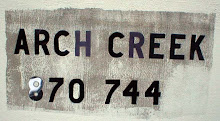Critics fret that health care reform would undermine American family values, not least by convening somber death panels to wheel away Grandma as if she were Old Yeller.
But peel away the emotions and fearmongering, and in fact it is the existing system that unnecessarily takes lives and breaks apart families.
My friend M. — you’ll understand in a moment why she’s terrified of my using her name — had to make a searing decision a year ago. She was married to a sweet, gentle man whom she loved, but who had become increasingly absent-minded. Finally, he was diagnosed with early-onset dementia.
The disease is degenerative, and he will become steadily less able to care for himself. At some point, as his medical needs multiply, he will probably need to be institutionalized.
The hospital arranged a conference call with a social worker, who outlined how the dementia and its financial toll on the family would progress, and then added, out of the blue: “Maybe you should divorce.”
“I was blown away,” M. told me. But, she said, the hospital staff members explained that they had seen it all before, many times. If M.’s husband required long-term care, the costs would be catastrophic even for a middle-class family with savings.
Eventually, after the expenses whittled away their combined assets, her husband could go on Medicaid — but by then their children’s nest egg would be gone, along with her 401(k) plan. She would face a bleak retirement with neither her husband nor her savings. . . .
The hospital told M. not to waste time in dissolving the marriage. For five years after any divorce, her assets could be seized — precisely because the government knows that people sometimes divorce husbands or wives to escape their medical bills.
“How could I divorce him? I loved him,” she told me. . . .
So M. divorced the man she loves. I asked him what he thought of this. He can still speak, albeit not always coherently, and he paused a long, long time. All he could manage was: “It’s hard to say.”
Long-term care constitutes a difficult and expensive challenge in any health system. But the American patchwork, full of cracks through which people fall, has a special problem with medical expenses of all kinds bankrupting couples.
A study reported in The American Journal of Medicine this month found that 62 percent of American bankruptcies are linked to medical bills. These medical bankruptcies had increased nearly 50 percent in just six years. Astonishingly, 78 percent of these people actually had health insurance, but the gaps and inadequacies left them unprotected when they were hit by devastating bills.
M. still helps her husband and, quietly, continues to live with him and care for him. But she worries that the authorities will come after her if they realize that they divorced not because of irreconcilable differences but because of irreconcilable medical bills. There were awkward questions from friends who saw the divorce announcement in the newspaper. . . .
The existing system doesn’t just break up families, it also costs lives. A 2004 study by the Institute of Medicine, a branch of the National Academy of Sciences, found that lack of health insurance causes 18,000 unnecessary deaths a year. That’s one person slipping through the cracks and dying every half an hour.
In short, it’s a good bet that our existing dysfunctional health system knocks off far more people than an army of “death panels” could — even if they existed, worked 24/7 and got around in a fleet of black helicopters.
So, for those of you inclined to believe the worst about President Obama, think it through. Suppose he is indeed a secret, foreign-born Muslim agent who is scheming to undermine American family values while killing off as many grandmothers as possible.
If all that were true, why on earth would he be trying so hard to reform our health care system? We already know how to prod families into divorce and take a life unnecessarily every 30 minutes — all we need to do is reject reform and stick with exactly what we have.





















